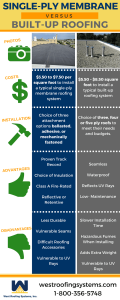Analyzing The Expenditures Of Solar Panel Setup: Is It A Smart Financial Move?
Analyzing The Expenditures Of Solar Panel Setup: Is It A Smart Financial Move?
Blog Article
Authored By-Gade Dunlap
When thinking about the costs of solar installation, you could wonder about the upfront financial investment required and whether it aligns with the prospective lasting benefits. Understanding solar energy companies near me and outs of these expenditures and the various factors influencing the total return can clarify the value recommendation of transitioning to solar energy. By reviewing both the first configuration prices and the forecasted cost savings in time, you can gain understanding into whether the financial investment in solar installment holds guarantee for your monetary future.
First Arrangement Costs
When considering the prices of solar installment, the first arrangement expenditures play a crucial function in your decision-making process. These upfront costs include the cost of solar panels, inverters, installing equipment, and installment labor.
The cost of photovoltaic panels can vary depending upon the brand, performance, and dimension you select. Inverters are important for transforming the sun's energy into usable electrical power and come in various types such as string inverters, microinverters, and power optimizers, each with its own expense implications.
Mounting tools, such as racks and rails, is required to firmly install photovoltaic panels on your roofing system or property.
The installment labor price covers the expert setup of the solar system, making sure that everything is set up appropriately and effectively. Keep in mind that while these initial arrangement expenses might appear high, there are frequently refunds, tax rewards, and funding alternatives readily available to aid counter the expenses and make solar installation much more budget friendly in the future.
Long-Term Financial Savings Analysis
To recognize the monetary benefits of solar installment gradually, it's crucial to carry out a comprehensive lasting financial savings evaluation. While the preliminary configuration expenses of photovoltaic panels might seem overwhelming, the long-lasting cost savings can surpass these expenses considerably. By utilizing the power of the sunlight to generate electrical power for your home, you can potentially conserve countless bucks on your utility expenses over the lifespan of your planetary system.
Among the essential aspects to take into consideration in a long-term cost savings analysis is the reduction in your electrical power expenses. With solar panels, you can produce your electrical energy, decreasing or even eliminating your dependence on the grid. This can bring about significant cost savings, specifically as utility rates continue to climb.
Furthermore, https://erickzekpt.myparisblog.com/30363970/launch-your-adventure-into-a-brighter-environment-friendly-future-by-using-solar-power-in-your-home-and-reveal-the-groundbreaking-benefits-that-lie-in-advance of governments use motivations such as tax credit histories and rebates for setting up solar panels, further enhancing your long-term financial savings. By making the most of these motivations and optimizing your solar energy production, you can take pleasure in considerable financial advantages for many years to find.
Return on Investment Estimation
Taking into consideration the monetary advantages of solar installation, it's time to assess the Roi (ROI) calculation. Establishing the ROI involves comparing the overall prices of setting up a planetary system with the monetary benefits it generates over its life-span.
To calculate ROI, divide the net benefit from the system by the complete financial investment price and increase by 100 to get a percent. The ROI formula is: (Net Profit/ Total Amount Investment Price) x 100.
For instance, if the total expense of setting up a solar system is $20,000, and over its life expectancy, it creates financial savings and revenues amounting to $30,000, the internet profit would be $10,000. Separating this by the overall financial investment expense of $20,000 provides a ratio of 0.5. Multiplying this by 100 gives an ROI of 50%.
Normally, a higher ROI shows a more economically rewarding financial investment. Variables like government incentives, maintenance prices, and power rate variations can impact the ROI of solar installments. Comprehending the ROI aids in analyzing whether purchasing solar power is worth it in the future.
Conclusion
Finally, recognizing the costs of solar installment is essential for determining if it deserves the investment. By considering initial configuration expenses, performing a long-term savings analysis, and calculating the return on investment, you can make an informed decision about the financial worth of solar power. With supplemental resources for reduced utility costs and boosted power self-reliance, buying solar installation can be a wise option for both your purse and the environment.
